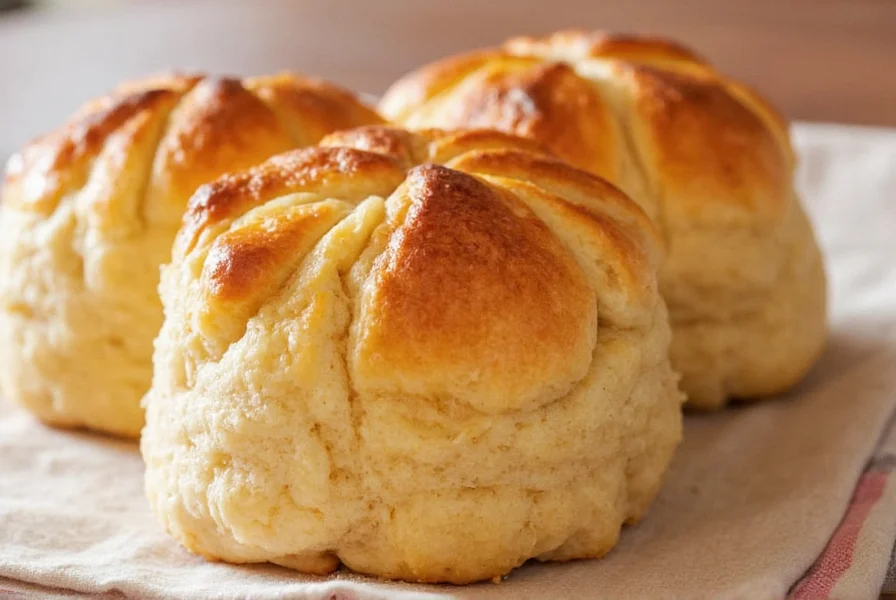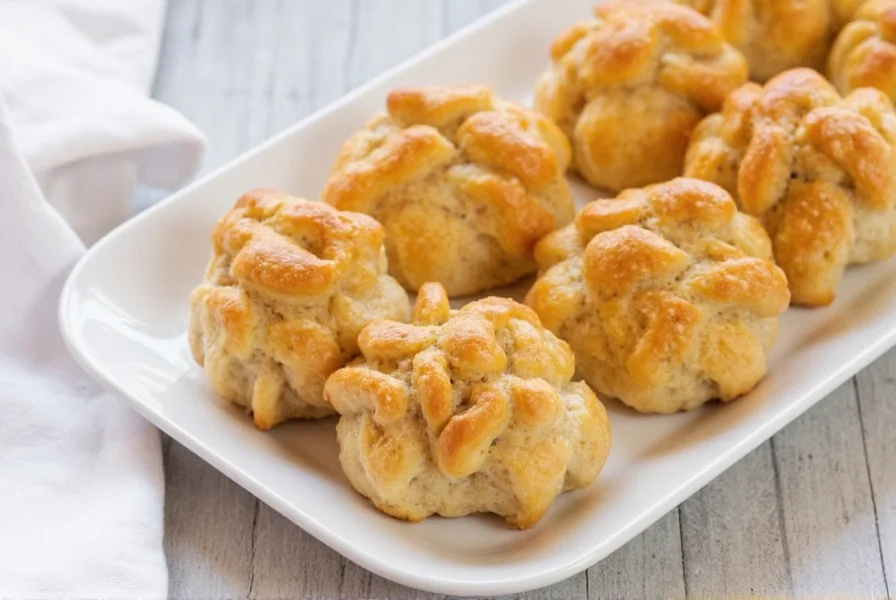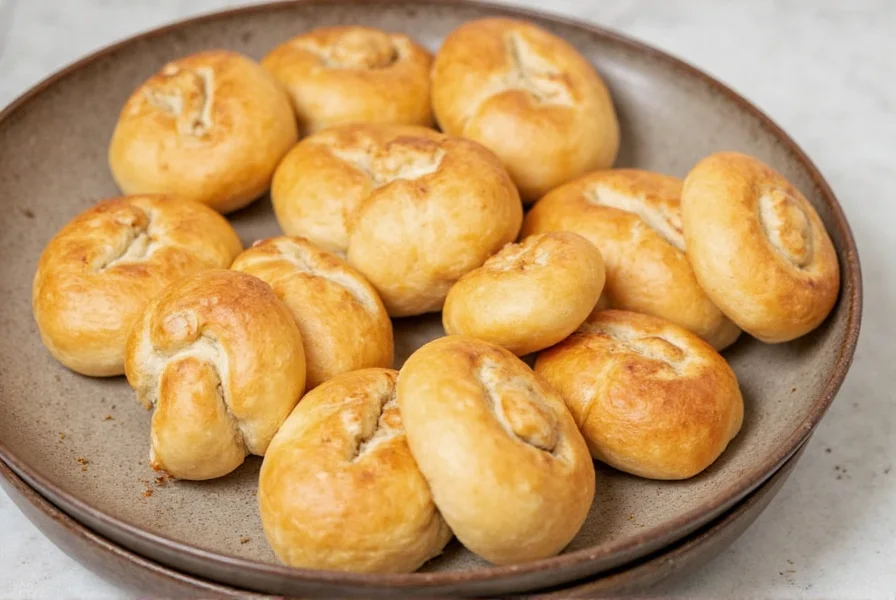Cardamom buns represent one of Scandinavia's most cherished baking traditions, with roots tracing back to the 16th century when cardamom first arrived in Nordic countries through European trade routes. Unlike their cinnamon roll cousins, cardamom buns offer a more nuanced flavor profile that has captivated bakers and pastry enthusiasts worldwide.
The Historical Journey of Cardamom Buns
Cardamom's path to becoming a staple in Nordic baking is fascinating. Originally cultivated in India and Sri Lanka, this precious spice traveled through Arab traders to Constantinople, then to Venice, and eventually reached Scandinavia via Dutch and Portuguese merchants. By the 1800s, cardamom had become affordable enough for ordinary households, transforming from a luxury item to a baking essential.
In Sweden, cardamom buns (known as kardemummabullar) became particularly popular, with regional variations developing across the country. The traditional Swedish version typically features a spiral shape with a cardamom-sugar-butter filling, while Norwegian kardemommebolle often includes a pearl sugar topping. Finland's kardemummapiirakka frequently incorporates cardamom in both the dough and filling with a distinctive square shape.
Essential Ingredients for Authentic Cardamom Buns
The magic of exceptional cardamom buns begins with ingredient quality. For the most vibrant flavor, always use freshly ground green cardamom pods rather than pre-ground spice. The pods contain tiny black seeds that, when crushed, release aromatic compounds that deteriorate quickly in pre-ground form.
Professional bakers recommend using 8-10 whole cardamom pods per dozen buns, yielding approximately 1½ teaspoons of freshly ground spice. The dough requires standard yeast roll ingredients—flour, milk, butter, sugar, eggs, and yeast—but the cardamom infusion makes all the difference. For the filling, a combination of softened butter, sugar, freshly ground cardamom, and sometimes a touch of orange zest creates the signature flavor.
| Regional Variation | Distinctive Features | Cardamom Ratio | Special Techniques |
|---|---|---|---|
| Swedish Kardemummabullar | Spiral shape, cardamom in dough and filling | 1.5 tsp per dozen | Dough rested overnight for flavor development |
| Norwegian Kardemommebolle | Rounded shape, pearl sugar topping | 1 tsp per dozen | Cardamom only in dough, not filling |
| Finnish Kardemummapiirakka | Square shape, cardamom in both layers | 2 tsp per dozen | Dough rolled thin, cut into squares |
| Modern American Version | Larger portion, sweeter filling | 1 tsp per dozen | Often includes cinnamon in filling |
Mastering the Perfect Cardamom Bun Technique
Creating exceptional cardamom buns requires attention to temperature and timing. The milk should be warmed to 105-115°F (40-46°C) to activate the yeast without killing it. When incorporating the cardamom, mix it thoroughly with the dry ingredients to ensure even distribution—clumping can create overly intense spots.
For optimal texture, professional bakers recommend a two-rise method: first allowing the dough to double in size at room temperature, then refrigerating it overnight. This slow fermentation develops complex flavors while making the dough easier to handle. When shaping, roll the dough rectangle to approximately 16x12 inches before spreading the filling, then cut into 1-inch strips to form the characteristic spirals.
Baking temperature is critical—350°F (175°C) for 18-22 minutes yields the perfect golden brown exterior with a soft, pillowy interior. Overbaking causes the cardamom flavor to diminish, while underbaking leaves the dough dense. The buns are done when they reach an internal temperature of 190°F (88°C).
Common Cardamom Bun Challenges and Solutions
Many home bakers encounter issues with their cardamom buns. If the rolls spread too much during baking, the dough likely contained too much moisture or wasn't chilled sufficiently before baking. For tighter spirals, roll the dough more firmly and ensure clean cuts when dividing the log.
When cardamom flavor seems muted, the likely culprits are stale spice or insufficient quantity. Always test your cardamom by crushing a pod—if it doesn't release a strong aroma, it's past its prime. For more intense flavor without overwhelming the bun, increase the cardamom by ¼ teaspoon increments rather than doubling the amount.
For those adapting recipes to high-altitude environments, reduce the yeast by 25% and increase liquid by 2-4 tablespoons to compensate for drier air and faster rising times. Humid climates may require slightly less liquid in the dough to maintain proper consistency.
Serving and Storage Recommendations
Cardamom buns deliver their best flavor when served slightly warm, ideally within 2-3 hours of baking. The aromatic compounds in cardamom are volatile and dissipate as the buns cool completely. For optimal enjoyment, reheat day-old buns in a 300°F (150°C) oven for 5-7 minutes before serving.
Proper storage maintains quality for up to 3 days at room temperature in an airtight container. For longer preservation, freeze the unbaked shaped rolls on a parchment-lined baking sheet, then transfer to freezer bags. When ready to bake, thaw overnight in the refrigerator and allow an additional 30-45 minutes rise time before baking.

Exploring Cardamom Bun Variations
While traditional recipes remain popular, creative adaptations have emerged globally. Vegan versions substitute dairy with plant-based alternatives while maintaining the signature flavor. Some bakers incorporate cardamom into the glaze rather than the filling for a more subtle flavor profile.
For those seeking gluten-free options, a blend of rice flour, tapioca starch, and xanthan gum can replace wheat flour, though the texture will differ from traditional buns. Adding a touch of orange zest to the filling complements cardamom's citrus notes, while chopped almonds provide textural contrast to the soft dough.

Cardamom Bun Pairing Suggestions
The complex flavor profile of cardamom buns pairs beautifully with specific beverages and accompaniments. Traditional Scandinavian coffee, brewed strong and black, provides the perfect counterpoint to the sweet pastry. For tea enthusiasts, a robust Assam or a spiced chai enhances the warm notes in the cardamom.
When serving for breakfast, consider accompanying cardamom buns with unsalted butter and cloudberry jam—a Nordic combination that balances sweetness with tartness. For dessert presentations, a dollop of whipped cream infused with vanilla bean makes an elegant finishing touch.
Frequently Asked Questions
What's the difference between cardamom buns and cinnamon rolls?
Cardamom buns feature cardamom as the primary spice in both dough and filling, creating a more complex, citrusy flavor profile compared to cinnamon rolls' dominant warm cinnamon taste. Traditional cardamom buns typically contain less sugar in the filling and often lack the thick icing common on cinnamon rolls. The dough for cardamom buns is usually slightly richer with more butter and eggs.
Can I use pre-ground cardamom instead of whole pods?
While pre-ground cardamom works in a pinch, it lacks the vibrant flavor of freshly ground pods. Ground cardamom loses its aromatic compounds quickly—within weeks—while whole pods retain freshness for 6-12 months. For best results, use 1½ teaspoons of pre-ground cardamom to replace 10 whole pods, but expect a less complex flavor profile. Always check pre-ground cardamom's aroma before using; if it smells faint, it's past its prime.
Why did my cardamom buns turn out dense?
Dense cardamom buns typically result from over-kneading the dough, using expired yeast, or insufficient rising time. Ensure your yeast is fresh by proofing it in warm milk with a pinch of sugar before incorporating into the dough. The dough should double in size during the first rise, which takes 1-2 hours at room temperature. Over-flouring during kneading also creates tough buns—add flour gradually until the dough pulls away from the bowl but remains slightly tacky.
How can I make cardamom buns ahead of time?
Prepare cardamom buns ahead by shaping the rolls and placing them on the baking sheet, then covering and refrigerating overnight. The cold fermentation develops flavor while slowing yeast activity. When ready to bake, remove from refrigerator 30 minutes before baking to take the chill off, then bake as directed. Alternatively, freeze shaped unbaked rolls on a baking sheet, then transfer to freezer bags. Thaw overnight in the refrigerator before baking, adding 30-45 minutes to the rise time.
What's the best way to store cardamom buns?
Store cooled cardamom buns in an airtight container at room temperature for up to 3 days. For longer storage, freeze completely cooled buns in freezer-safe bags with parchment between layers. Thaw at room temperature for 2 hours or reheat frozen buns in a 300°F oven for 8-10 minutes. Avoid refrigerating cardamom buns as the cold temperature accelerates staling. For best flavor, refresh day-old buns in a 300°F oven for 5-7 minutes before serving.











 浙公网安备
33010002000092号
浙公网安备
33010002000092号 浙B2-20120091-4
浙B2-20120091-4